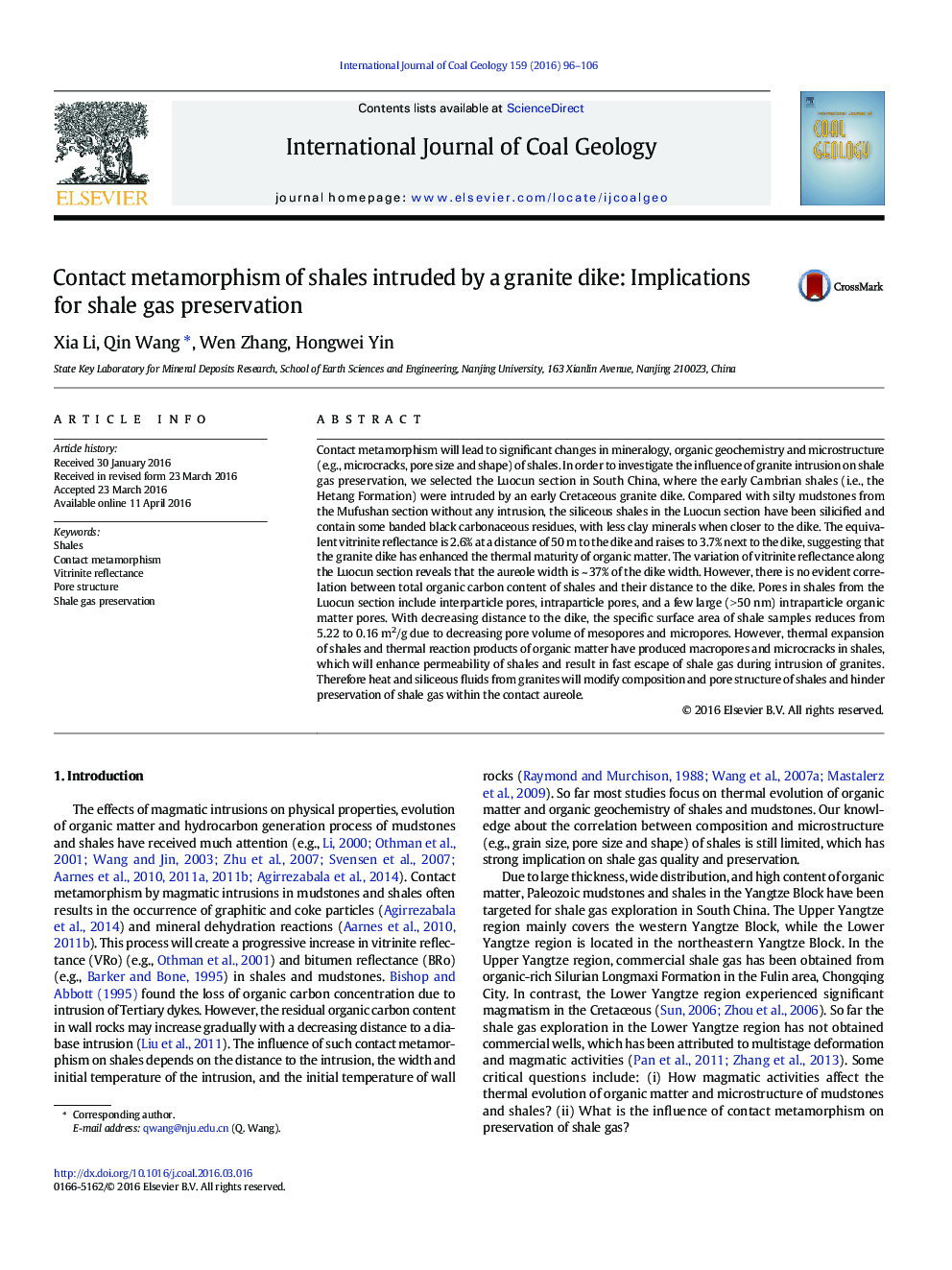| Article ID | Journal | Published Year | Pages | File Type |
|---|---|---|---|---|
| 1752807 | International Journal of Coal Geology | 2016 | 11 Pages |
•The granite dike has strong effect on mineralogy, organic geochemistry and pore structure of black shales.•There is no evident relationship between TOC content and the distance to the dike.•Contact metamorphism formed macropores and microcracks in the shales near the contact boundary.•Intrusion of granites will cause a fast escape of shale gas in shales within the contact aureole.•The results provide new insights on shale gas preservation in basins with magmatic activities.
Contact metamorphism will lead to significant changes in mineralogy, organic geochemistry and microstructure (e.g., microcracks, pore size and shape) of shales. In order to investigate the influence of granite intrusion on shale gas preservation, we selected the Luocun section in South China, where the early Cambrian shales (i.e., the Hetang Formation) were intruded by an early Cretaceous granite dike. Compared with silty mudstones from the Mufushan section without any intrusion, the siliceous shales in the Luocun section have been silicified and contain some banded black carbonaceous residues, with less clay minerals when closer to the dike. The equivalent vitrinite reflectance is 2.6% at a distance of 50 m to the dike and raises to 3.7% next to the dike, suggesting that the granite dike has enhanced the thermal maturity of organic matter. The variation of vitrinite reflectance along the Luocun section reveals that the aureole width is ~ 37% of the dike width. However, there is no evident correlation between total organic carbon content of shales and their distance to the dike. Pores in shales from the Luocun section include interparticle pores, intraparticle pores, and a few large (> 50 nm) intraparticle organic matter pores. With decreasing distance to the dike, the specific surface area of shale samples reduces from 5.22 to 0.16 m2/g due to decreasing pore volume of mesopores and micropores. However, thermal expansion of shales and thermal reaction products of organic matter have produced macropores and microcracks in shales, which will enhance permeability of shales and result in fast escape of shale gas during intrusion of granites. Therefore heat and siliceous fluids from granites will modify composition and pore structure of shales and hinder preservation of shale gas within the contact aureole.
